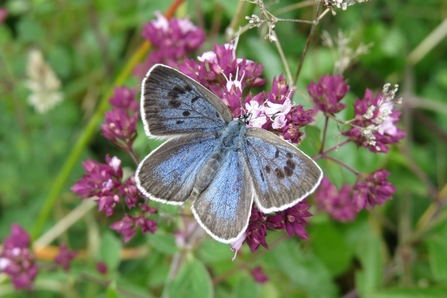Episode three of Wild Isles pays a visit to Daneway Banks nature reserve, a site of unimproved limestone grassland co-owned by Gloucestershire Wildlife Trust (GWT) and the Royal Entomological Society (RES). Managed by GWT, the reserve has become world-renowned for its population of large blue butterflies, an endangered species that were once extinct here in the UK.
The sequence takes a closer look at the complex and unexpected relationship between the large blue and red ants, showing in minute detail the interconnectedness of our natural world.

